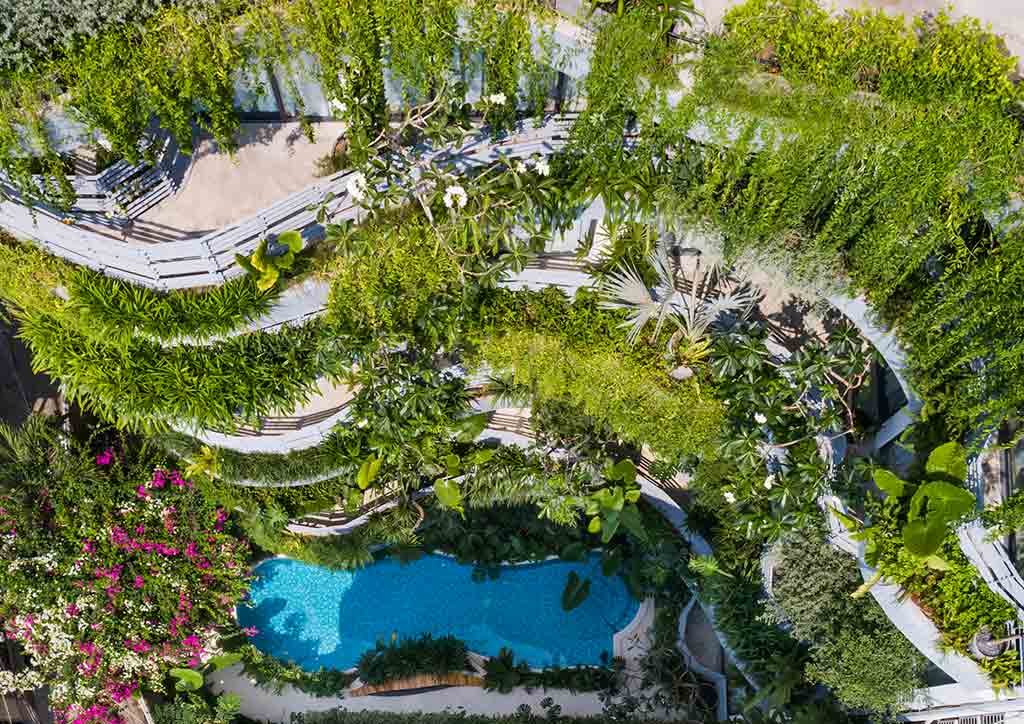Cityscapes, often synonymous with towering buildings and bustling streets, are increasingly realizing the essence of integrating nature into the fold. Apartments in urban areas highlight the desirability of green surroundings. With the proper incorporation of grassy plots and blooming gardens, urban dwellers can reap many benefits these spaces offer—from mental reprieve to sustainable community development.
A Breather from the Bustle: The Mental Health Benefits of Urban Green Spaces
Urban green spaces offer a crucial respite from the bustling city life, providing significant mental health benefits for residents. These natural havens, such as parks and community gardens, are essential for reducing stress, enhancing mood, and fostering a sense of well-being. For residents of Centennial apartments, proximity to these spaces means easy access to serene environments where they can unwind and recharge. Studies have shown that spending time in nature can decrease anxiety, improve focus, and promote relaxation. Whether it’s a morning jog, a leisurely walk, or simply sitting and enjoying the greenery, urban green spaces are vital for maintaining mental health amidst the urban hustle.
Eco-Friendly Living: The Environmental Impact of Green Spaces
Beyond their value for recreation and respite, urban green spaces act as eco-warriors. These patches of nature in concrete jungles help cities bridge the gap towards sustainability. Plentiful in parks, trees sequester carbon and combat air pollution, mitigating the effects of urbanization on climate change. They serve as natural coolants, offsetting the urban heat island effect that often plagues densely populated areas. Rather than merely accenting the urban landscape, green spaces stand at the forefront of environmental stewardship within city boundaries. They help manage stormwater runoff, reduce flooding risks, and improve overall water quality, demonstrating their multifaceted role in urban ecosystems.
Social Spaces: How Parks Build Community Connections
Urban parks and gardens are often heralded as the community’s living room, where people from diverse backgrounds converge, converse, and connect. These spaces foster a sense of unity and belonging, acting as venues for community events and daily social interactions. They are the stages on which community life’s everyday dramas and delights unfold. For children, green spaces encourage play and nurture friendship; for adults, they offer respite and social engagement; for older people, they provide a network and a sense of community. Parks are critical for knitting the social fabric of neighborhoods tightly together. Regular community events and activities hosted in these green areas can further deepen social bonds, offering chances for lifelong relationships to blossom amid nature.
Attracting Wildlife: Biodiversity in the Heart of the City
Urban green spaces are not exclusively for human enjoyment; they are also crucial for urban wildlife, serving as miniature reserves and wildlife corridors. These green patches host various fauna, from pollinators buzzing among flowers to bird species that perch on city trees. They bolster urban ecosystems, aiding in the conservation of biodiversity. By welcoming nature into the urban environment, cities gain more than just environmental benefits; they offer residents the chance to reconnect with the flora and fauna once displaced by urban growth. Green spaces provide essential habitats and resources for wildlife, promoting biodiversity and natural beauty within the city’s heart.
Sustainability and Green Spaces: Complementing Modern Urban Development
As cities expand and modernize, the pressure on land use intensifies. Herein, green spaces provide ecological, aesthetic, and recreational benefits that complement urban growth. These areas can amplify the sustainability traits of development when designed with intention and foresight. Responsible planning integrating nature with the built environment is a testament to a city’s dedication to sustainable living and conservation, creating spaces that future generations can appreciate and sustain. By incorporating native plants and sustainable practices, urban green spaces can reduce a city’s ecological footprint, ensuring a greener, more resilient environment for all.
Green Spaces and Property Values: A Symbiotic Relationship
It’s well-documented within real estate circles that the presence of green spaces can positively impact property values. Residents appreciate the blend of urban convenience with the tranquility that nature provides. A study confirms this trend, noting that properties near green spaces often demand higher prices. This suggests that these areas are more than just visual amenities; they are embedded within the valuation of urban real estate itself. The desirability of living close to a park or garden translates to economic benefits, enhancing property marketability and desirability.
A Healthier Population: Physical Health Benefits of Urban Parks
The perks of urban green spaces extend well into physical health. Parks are akin to natural gyms, offering the perfect setting for a jog, a yoga session, or simply walking the dog. They lure city residents outdoors, promoting an active lifestyle crucial for combating health issues like obesity, hypertension, and heart disease. Fresh air and open space motivate individuals to keep fit and enjoy the health benefits associated with regular exercise. In the long run, these spaces contribute to a healthier, more vibrant urban populace. Researchers have found that even a moderate amount of time spent in green spaces significantly boosts physical fitness, enhances immunity, and promotes overall wellness, transforming city life into a healthier experience.
Design Considerations for Urban Green Spaces
The imperatives of urban green space design transcend mere landscaping. They embody careful considerations of accessibility, diversity of flora and fauna, area-specific needs, safety, and overall contribution to the urban ecosystem’s health. The most effective green spaces reflect the community’s culture and needs, promoting inclusivity and biodiversity. A well-designed park is a point of pride for communities, signaling a commitment to a living environment that is both enjoyable and sustainable. Designs that incorporate features like sensory gardens, water elements, shaded seating, play areas, and fitness zones cater to diverse user groups, ensuring that the green space meets the multifaceted needs of urban residents. Thoughtful placement and maintenance of these spaces further enhance their utility, making them beloved community assets that stand the test of time.





